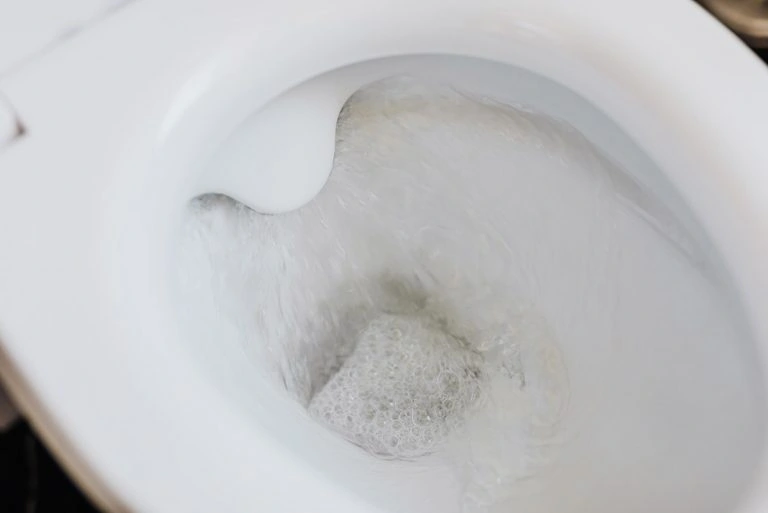Pest control is a key part of agriculture, gardening, and even building and home maintenance. If left unchecked, pests can quickly multiply to become an infestation, damaging plants, crops, and human health. Unfortunately, conventional pest control methods are often highly toxic and are increasingly recognized as causing significant ecological damage.
As the negative environmental effects of pesticides are becoming better understood, people are looking for eco-friendly alternatives that will eradicate pests without harming the environment.
In this article, we explain what eco-friendly pest control is and share 17 eco-friendly pest control methods that are commonly used.
The problem with pest control methods today
The poisons and pesticides used to tackle common pests like insects, rodents, and birds have an extremely poor ecological profile. Conventional pesticides of the 20th century, like DDT, have caused substantial environmental harm and damage to human health, and with a billion pounds of pesticides used in the US annually, their negative effects continue to the present day.

Pesticides are environmentally problematic because they can easily cause long-term contamination of the air, soils, and groundwater. Improper handling, use, and disposal can lead to effects on human health like birth defects and cancers. In the environment, pesticide contamination has impacted populations of beneficial organisms like honeybees.
Domestic pest control methods also expose people, pets, and local wildlife to poisons and baited traps. The impact of these harmful substances has led to increasing calls for the control or ban of ecologically harmful pesticides and a search for eco-friendly pest control methods that cannot do as much damage.
What exactly is ‘eco-friendly’ pest control?
Eco-friendly pest control is a broad family of pest control methods that have a low environmental impact. As the sustained negative effects of pesticides and other pest-control methods have become recognized, alternatives that have fewer negative effects on the environment are being sought.
Eco-friendly pest control has some or all of the following qualities:
Eco-friendly pest control is usually more ‘natural’
Eco-friendly pest control methods use naturally derived substances rather than synthetic chemicals that can damage the environment over a long period. Natural substances derived from plants, flowers, or microorganisms are used in the eco-friendly pest control solutions shared below.
Eco pest control is more sustainable
Ecologically friendly pest control solutions that are derived from natural substances and organisms are more sustainable than conventional pesticides and poisons created by the petrochemical industry.
Eco-friendly pest control methods are non-toxic
Many eco-friendly pest control methods are non-toxic. This means that they do not harm the health of people who handle, or are exposed to them. This means you can use them with confidence in any environment.

Eco-friendly pest control targets specific pests
The most effective pest-control methods target specific pests, rather than indiscriminately killing any insect or animal that comes into contact with it. Many eco-friendly pest control solutions are highly specific in their target species. This prevents disruption to food chains and the wider ecosystem from large numbers or beneficial organisms being killed.
Eco-friendly pest control methods spare beneficial organisms
Pesticides and other pest control methods have been responsible for reducing the population of beneficial organisms that perform vital roles in our ecosystem like pollination, decomposition, or even keeping pest numbers down. Eco-friendly pest control spares these beneficial creatures so that they can continue to perform their useful roles without being harmed.
Eco-friendly pest control does not damage plants
For pest control for plants and crops, it is essential that the substances or organisms used do not damage or destroy the plan that is treated.
Eco-friendly pesticides are eliminated quickly
One of the main problems with conventional pesticides is that they can persist in the environment for a long time. Gardeners, agriculturalists, and pest control professionals prefer eco-friendly pesticides because they quickly degrade. This means that they do not contaminate the environment, and their pesticidal effects don’t persist indefinitely.
Eco-friendly pest control is still very effective
Eco-friendly pest control still has to be effective. Many eco-friendly solutions have proven efficacy in the agricultural sector (where pest activity can significantly affect yields). However, some natural substances require repeated applications to control pests, because the concentration of the active substances is low.
17 eco-friendly pest control solutions
Many pest control options actually don’t harm the environment, so it’s crucial that we begin to adopt these. This list of 17 eco-friendly pest control solutions spans a variety of methods, substances, and organisms that can keep pests at bay without harming the environment.
1. Physical removal
Many pests, like slugs, or snails, can be picked up and thrown into a bucket of soapy water to kill them. Hand-picking can be a free, easy, and surprisingly effective form of eco-friendly pest control if done in the evenings when the slugs venture into your yard to feed. Wear gloves to handle beetles and caterpillars to avoid irritating bites or spines.

2. Traps
Trapping can be an eco-friendly and humane method for removing pests from your home or garden. Eco-friendly pest traps do not contain poison, pesticides, or chemicals that can harm the environment or other animals. Solutions range from simple beer traps for slugs or sticky insect paper to complex multiple-catch devices used by pest control professionals to capture rodents.
3. Proofing your property
Taking simple steps to make your property pest-proof can prevent a pest infestation that requires chemical pest control methods. Filling gaps in floorboards or wall cavities can prevent pests from accessing a property. You can minimize insect infestations by removing tree branches that are too close to a property or sealing entry points for wasps.
4. Heat treatments
Heat treatments are a popular eco-friendly pest control for house pests like bed bugs, termites, and moths. Despite using large gas-powered space heaters, pest-control professionals consider this method to be eco-friendly because it does not use chemicals that can linger and harm animals and plants.
Heat treatments involve the creation of a contained environment within a room that is heated in cycles to a temperature that indiscriminately kills any insects, eggs, or larvae present. Sensors monitor the temperature to ensure that the treated room reaches an adequate temperature to eradicate the pests.
Watch this video to see how the process works:
5. Microbial insecticides
Microbial insecticides are a group of microorganisms that can target and kill pests, either directly or via substances they produce. This class of eco-friendly pest control includes bacteria, fungi, protozoa, and viruses. To be truly eco-friendly, microbial insecticides need to be highly specific, so they do not kill beneficial insects.
Specialist producers breed or culture microbial insecticides in large quantities and sell them to gardeners and the agricultural sector. In the US, the Federal Insecticide, Fungicide, and Rodenticide Act (FIFRA) regulate the use of these organisms. Here are some of the most common microbial insecticides:
- Bacillus thuringiensis (B.t.): This spore-producing bacterium kills insect larvae that ingest it or its endotoxin spores. Different strains of this bacteria affect different types of insects, including caterpillars, beetles, and flies.
- Bacillus popollia (milky spore disease): This spore-producing bacterium kills insect larvae that ingest it or its endotoxin spores. Different strains of this bacteria affect different types of insects, including caterpillars, beetles, and flies.
- Beauveria bassiana: this fungus can kill a range of arthropods. It requires appropriate temperature and humidity to perform.
- Nosema locustae: a protozoan that is used to control grasshoppers by ingestion.
6. Natural predators
Natural predators are a type of biological pest control and include any living organisms that will predate the pests you want to get rid of. This is a broad class of eco-friendly pest control that includes larvae, insects, birds, insectivores, rodents, and mammals.
Here are some examples of natural predators that can be used in eco-friendly pest control:
- Ladybugs (Coccinellidae): Ladybugs are an effective alternative to chemical pest control as they prey on common garden pests that include aphids, asparagus beetle larvae, thrips, spider mites, whiteflies, and mealybugs. You can purchase ladybugs to introduce into your garden, or make your yard more attractive to these insects by planting pollen-rich flowers.
- Parasitic wasps: these insects are bred for commercial agriculture and horticulture to control pests like the tomato hornworm, aphids, cutworm, white grubs, and caterpillars. Parasitic wasp species like the ichneumon wasp or braconid wasp lay their eggs in the larvae of the pests that they target. The wasp eggs then hatch and eat the pest alive from the inside.
- Birds: Birds will gladly eat slugs, snails, and insect pests. Welcoming birds to your garden to eat any pests can help control pests and increase pollination as an added bonus. However, if you are growing food, they may also want to eat your produce when it develops, so protecting fruit with netting may be necessary.
7. Diatomaceous Earth (DE)
Diatomaceous earth is a mineral-rich powder that is made from the fossilized remains of diatom algae that have been milled or micronized for use as an insecticide in the home and garden. DE is a powerful desiccant that kills insects by dehydrating their exoskeletons if they touch the powder. It also dries out the environment, repelling any insects in its vicinity.
You can use DE as eco-friendly pest control by sprinkling it in the areas of your property where there are pests. DE can also tackle snails, slugs, and other garden pests if you sprinkle it around the plants you want to protect. Take care handling this power as DE is an irritant if it gets into your eyes or you inhale it.

8. Kaolin clay
Kaolin clay is a mineral-rich non-toxic insoluble clay that can protect fruit and vegetable crops from a variety of pests, including insects, mites, and microorganisms like fungi and bacteria. Growers spray a suspension of this eco-friendly pest control to create a barrier that repels pests from eating the treated produce.
Kaolin clay is an eco-friendly pest control that does not damage the treated crops (and it’s edible too). It has the additional benefit of shielding the produce from sunburn or heat stress. To maintain the protection of the crops, growers spray on the kaolin clay every 7 to 14 days.
9. Borax
Borax (sodium borate) is a household cleaning agent you can also use for eco-friendly pest control. Its white crystals are effective against household pests, including ants, cockroaches, termites, fleas, and rodents. If ingested, the borax crystals interfere with the digestion of the pest and can kill it.
You can apply borax as a powder to line entryways the pest uses, or as a liquid solution that you can inject into crevices in wood and other infested materials. Borax usually requires multiple treatments to eradicate pests.
10. Baking soda
Baking soda is a cheap and easy eco-friendly pest control. You can confidently apply bicarb to your home and garden areas to repel slugs and snails. You can also mix baking soda with vegetable oil and water to create a plant spray that prevents infestation by sap-sucking pests like aphids and mealybugs.
11. Coffee grounds
Many gardeners use coffee grounds as an organic pest control. When placed on the soil at the base of plants you want to protect, they act as an abrasive barrier, deterring snails and slugs that cannot go over them. The strong smell of coffee grounds also deters wasps, mosquitos, and other nuisance insects.

12. Insecticidal soaps
Insecticidal soaps are soap spray preparations that are made from the potassium salts of fatty acids. You can use these spays in the garden to tackle infestations of aphids, mealybugs, and other sap-sucking insects on your plants. Insecticidal soaps kill pests by desiccation or smothering. They are otherwise non-toxic and suitable for organic growing.
Though insecticidal soap sprays are usually safe for plants, test a small area of a plant you intend to treat before applying the spray all over. Some fatty acid sprays can cause damage to plants or produce.
13. Pyrethrum
Pyrethrum is an all-natural organic pesticide that is derived from the chrysanthemum flower family. It is an effective eco-friendly pest control solution that is non-toxic and completely biodegradable. It is even safe enough to treat head lice in medicated shampoos.
The pyrethrins in pyrethrum are a potent neurotoxin to insects and disrupt nervous system function, paralyzing, then killing the insect. For a pyrethrum formulation to be effective, it is usually mixed with another non-toxic and biodegradable insecticide, piperonyl butoxide, to ensure that the insects die.
14. Neem oil
Neem oil is a completely natural but highly effective pesticide made from the seeds of the neem tree. Neem originates from Asia, where it has been used for thousands of years to control pests in the home and garden. The active ingredient, Azadirachtin, kills and repels pests, and is concentrated in commercial products.
Neem oil is non-toxic to plants, animals, and humans. Because it has to be ingested to have its toxic effect, Neem oil targets the pests that eat plants and doesn’t affect bees or other beneficial pollinators. It also quickly degrades without polluting the soil or water. Its activity lasts only a few days, so regular reapplication is required.

15. Garlic
Raw garlic is a simple eco-friendly pest control that can be used to control pest infestations on plants. The sulfur compounds in the garlic repel a wide range of insects. Raw garlic cloves can be crushed in water to create a spray for plants. However, the plant needs to be sprayed daily for this pest-control method to be effective.
16. Essential oils
Essential oils are an important class of biopesticides. A wide range of essential oils can repel pests like insects and rodents from areas of your home and garden. They comprise a wide range of chemicals, including terpenes, benzene derivatives, and hydrocarbons. These substances have a wide range of effects on pests ranging from hormonal disruption to death.
Essential oils are a natural and sustainable eco-friendly pest control. They won’t harm beneficial insects and, once applied, degrade quickly and leave no traces in the environment. Peppermint oil, for instance, is a great natural bee repellent.
Depending on the quality and concentration of the essential oils, they can be used commercially, in gardens, or on humans and animals as they are generally non-toxic.
17. Companion plants
Companion planting is one of the most environmentally friendly ways to reduce pests in your yard. This pest control method involves planting plant species that contain or produce substances that actively repel insects. When planted near crops or other plants you want to protect, companion plants create a repellent barrier.
Examples of companion plants include:
- Basil
- Marigolds (tagetes)
- Chrysanthemums
- Lavender
- Sage
- Borage
- Thyme
- Calendula
As you can see, these herbs and flowers have strong scents. The strong smell of companion plants disrupts and deters potential pests that are searching for a host plant. Some companion plant combinations also have beneficial effects on the growth or the produce of the plants they are planted near.
In conclusion
As you can see, there are so many alternatives to the synthetic chemicals of conventional pesticides. These eco-friendly pest control methods are most effective when used according to a pest management plan that ensures you can control an infestation as quickly as possible.
Though these eco-friendly pest control methods are not harmful, it is still wise to minimize the use of any control agents to reduce the risk of unwanted effects.







![10 Truly Green Prefab Homes [+1 That’s Close]](https://greencoast.org/wp-content/uploads/2021/10/eco-friendly-prefab-homes-768x513.jpg)




